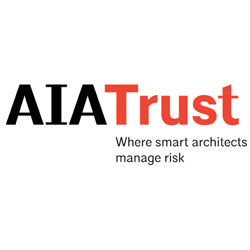Two substation enclosures in South Minneapolis transform transformers into award-winning public art
By Amy Goetzman
Energy infrastructure is pretty unsightly. We can do beautiful things with all that power, but the towering masses of pipes and wires that convey it to us can appear downright post-apocalyptic. When Xcel Energy expanded two South Minneapolis substations to meet growing energy demands, they needed to find a way to minimize the equipment’s visual impact on the two neighborhoods. So naturally they brought in architects.
“We looked at ideas from a number of different firms, but Alliiance was the only one that didn’t just want to enclose and cover up the substation,” says Xcel senior project manager Joseph Samuel. “They acknowledged that hiding or masking the substation wouldn’t serve the neighborhood or the project.”
Seeing a raw kind of beauty in the equipment, Alliiance let the materials and geometry of the substation guide the design of complementary architectural structures. “The tectonics were so interesting—electrodes, wires, conductors, electronics—it all inspired us,” says Alliiance senior associate Nina Ebbighausen, AIA. “This is key infrastructure, and we needed to embrace it, be transparent.”
The architects riffed philosophical on the concept of energy—motion, kinetics, and power. The result? Two enclosures that function as both protective barriers and high-profile public art. Eye-catching, thought-provoking, and instantly iconic, these projects are helping to revitalize two of Minneapolis’ busiest neighborhoods.
COMMUNITY MATTERS
Owners of design projects for the public realm often invite key stakeholders to weigh in; Xcel embraced that approach by organizing a group of community members to help direct the architects. This advisory group included homeowners and other representatives from the neighborhood, including, among other organizations, the Midtown Greenway Coalition, Little Earth of United Tribes, Metro Transit, and the City of Minneapolis.
“The challenge intensifies when you are building things for the entire community. There were so many variables we had to consider—everything from lighting and security to the history of railroads,” says Alliiance principal Ken Sheehan, AIA. “But the messiness of engagement uncovered ideas we wouldn’t have gotten to otherwise. I really think it takes community to make architecture. Neighbors put their faith in the process and truly supported us.”
The two substations, located on busy intersections in the Hiawatha and Midtown neighborhoods, needed to reflect the unique character and scale of their communities. “Hiawatha is such a classic industrial corridor, while Midtown is more residential, a deeply established neighborhood. But they both have this gritty, industrial appeal,” says Ebbighausen. “And then there’s the Greenway itself. People driving through the Midtown neighborhood could be entirely unaware that there’s this beautiful green parkway stretching out below them [in a former railroad trench], so we wanted to design a marker that would make a visual connection between the two worlds.”
The design team observed that 40,000 people pass the Hiawatha site every day—on foot, on light-rail transit, in cars, and on bikes. That called for a structure that could be experienced on different levels, at different speeds.
The Hiawatha substation features a lower gabion wall composed of a gridded steel cage holding a fill of rock. This durable, tactile wall is best experienced at eye level. Above it, five bands of gold-anodized aluminum mesh tilt like louvers, lightly veiling the infrastructure beyond. On the west side, the ribbons lift in unison “like the hem of a skirt,” says Ebbighausen. The highly reflective mesh is especially dynamic at sunset.
For the Midtown substation, the architects achieved the same duality with different materials. At the base, a series of rotating cedar pales suggests a picket fence, echoing the enclosures of nearby properties; as you move alongside the lower wall, the equipment inside is only glimpsed. The upper wall is again expressed in contoured metal mesh, but this one features a more complex pattern and colors that range from warm silver to light gold.
“As a resident of South Minneapolis, I was thrilled to have the opportunity to make an artistic contribution to the neighborhood,” says Sheehan. “It’s part of why I became an architect. I hope the architecture world seeks out more infrastructure projects like these two, because they really make a difference.”
XCEL ENERGY SUBSTATION ENCLOSURES
Location: Minneapolis, Minnesota
Client: Xcel Energy
Architect: Alliiance
www.alliiance.us
Principal-in-charge and project manager: Ken Sheehan, AIA
Project lead designer and project architect: Nina Ebbighausen, AIA
Construction manager: Xcel Energy
Completion: April 2014 for Hiawatha, August 2015 for Midtown
Photographer: Brandon Stengel, Assoc. AIA
2015 AIA MINNESOTA HONOR AWARD JUROR COMMENTS
“The decision to veil—but not entirely conceal—what’s contained there is an interesting choice. I think that’s one of the reasons why they’re so successful. In Des Moines, they hired an architect to put a container around a substation, and it turned into a building. This is urban design. This is so much better.”
“Each enclosure is a kind of billboard for the utility, and yet they didn’t write their name all over it. What a beautiful civic gesture—hats off to Xcel for doing this.”


